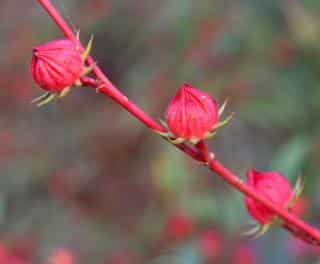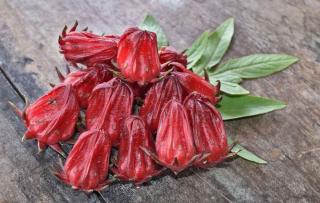

A herbaceous plant that grows in tropical regions and cultivated up to the fringe of the deserts, carcade is native to Guinea. As time went by, it spread widely throughout West Africa (more specifically Togo, Niger, Senegal, southern Mali, Burkina Faso, Benin and Ivory Coast); from there, it went on to further regions of the African continent, and is now cultivated in Central African Republic, Egypt, Congo and Botswana.
This plant has many different names, and for example in Niger is called bisspa, in Autralia it is called rosella, and in the United States it is often called jamaica. It is most often drunk in the form of syrup that is extracted from its red flowers. It is also known in Southeast Asia, Mexico and the French West Indies.
It belongs to the mallow family, and is the topic of much fascinating research in the medical field thanks to its positive impact on health. What are its therapeutic properties? What is the best advice and precautions to benefit from it in the most appropriate manner?

This plant has been brought over and planted in the New World during the slave trade by African natives who turned it into a staple item in their culinary habits. In Africa, some say that carcade is a magical plant that has the power to open the mind to reading the future, provoke love and give rise to sexual desire.
Building on this belief, during courting and love-related rituals, flower buds are burned and braided into wreaths worn around the neck during marriage ceremonies.
This taproot shrub has leaves that taste of sorrel. Its yellow colored flowers are mottled with red-brown spots and form a long red or green calyx (depending on the variety). The flower boasts all kinds of merits.
But what about the therapeutic properties and health benefits?
Also called “pink tea”, “Empire tea”, “hibiscus” or “Guinea red sorrel”, carcade is a mucilage-rich plant, which bears fruits that have a high vitamin C and citric acid content.

Recommended to lower blood pressure, Empire tea is also used for:
– fighting drowsiness,
– lowering arterial hypertension,
– soothing respiratory tract inflammations,
– reducing gastro-intestinal spasms,
– favoring weight gain
– reducing incidence of cardio-vascular diseases.
Its flowers, used externally (dressings dipped in hibiscus infusions) have a positive effect on wound healing for abscesses, dermatosis, edema and weeping eczema.
How to treat oneself with carcade?
A refreshing drink can easily be prepared from carcade. In a pot, add 4 fluid ounces (12 cl) of natural cane sugar and ½ cup of chopped carcade calyces in 1 quart (1 liter) boiling water.
Cover and let steep for ¼ hour. Filter, then add ¾ quarts (¾ liter) of cold water and sliced oranges or honey. Drink hot or cold.
In capsule form, swallow 1000 mg dried carcade 2 or 3 times a day.
As a tincture, drink 1 teaspoon twice a day.
As an infusion, add 2 teaspoons of chopped carcade in 8 fluid ounces (25 cl) boiling water. Let steep for 15 minutes. Filter. Add sugar. Drink.
Carcade is not recommended for expectant or nursing mothers. Ask your doctor about taking this herb.
I have an hibiscus and wondered if I can do something with its flowers when they fall,
tea is a good idea. Can I use them inmediatelly or must let them dry?
Thanks
You can use them immediately, you’ll even have more nutrients from them! If you’re used to having a specific dosage, say 5 grams for example, you’ll have to multiply that amount by 10 for fresh material, e.g. 50 grams. This is because 90% of the fresh material content is water, which is of course removed when you dry the plant.
You can also harvest the flowers and dry them for later use, too.